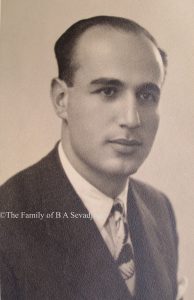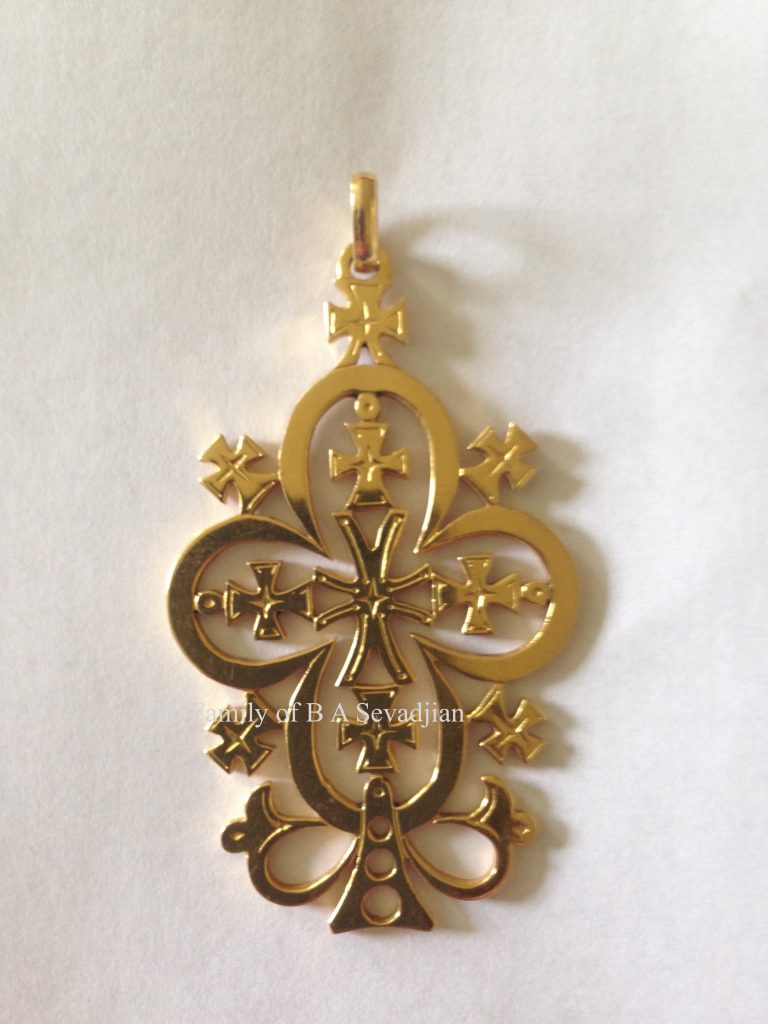Bedros Sevadjian was an Armenian who was born in Aintab, Ottoman Empire, on May 21, 1918. His father, Avedis Sevadjian, had been a successfully established merchant and industrialist in Ethiopia from 1900, having settled there after the Hamidian Massacres of 1896. Following the defeat of Ottoman forces in 1916, Avedis Sevadjian returned to Aintab with his young family only to have to leave again upon the defeat of the occupying French forces by Mustafa Kemal a few years later. Avedis Sevadjian then set up his permanent home in Addis Ababa, resuming his successful business life.
Bedros Sevadjian was educated at the Teferi Makonen School in Addis Ababa until his teens. There he met his lifelong friends, many of whom were members of the Ethiopian aristocracy.
Having decided that the family business, ASSCO—tannery, shoe factory and flour mill—was not for him, he apprenticed himself to Nigoghos Djidedjian, a jeweler at the Court of Haile Selassie I and a master of filigree work.
In 1938, Bedros Sevadjian left for Milan, Italy, where he studied silversmithing and jewelry, be-coming apprenticed to a firm which appreciated him enough to give him a Paulo Troubetzkoy statuette as a leaving present, which he cherished greatly.
Upon his return from Milan, he resumed work with Nigoghos Djidedjian. Djidedjian was an old man by then so Bedros Sevadjian bought the business and workshop from him and established B. A. Sevadjian in 1946. At that point he decided to make the business more than just jewelry and got a standing contract from the government for manufacturing the “buttons, symbols, crowns and stars for use on military uniforms,” as well as small denomination coins.
On Feb. 16, 1950, Bedros Sevadjian was appointed “Furnisher to the Imperial Palace,” thus hold-ing the Imperial Warrant “By Appointment to H. I. M. Haile Selassie I Emperor of Ethiopia.” He also became the assayer to the Imperial Mint (both positions were held by him until the advent of the Derg Regime in 1974, after which the business and properties—factory and shop—were con-fiscated and ruined).
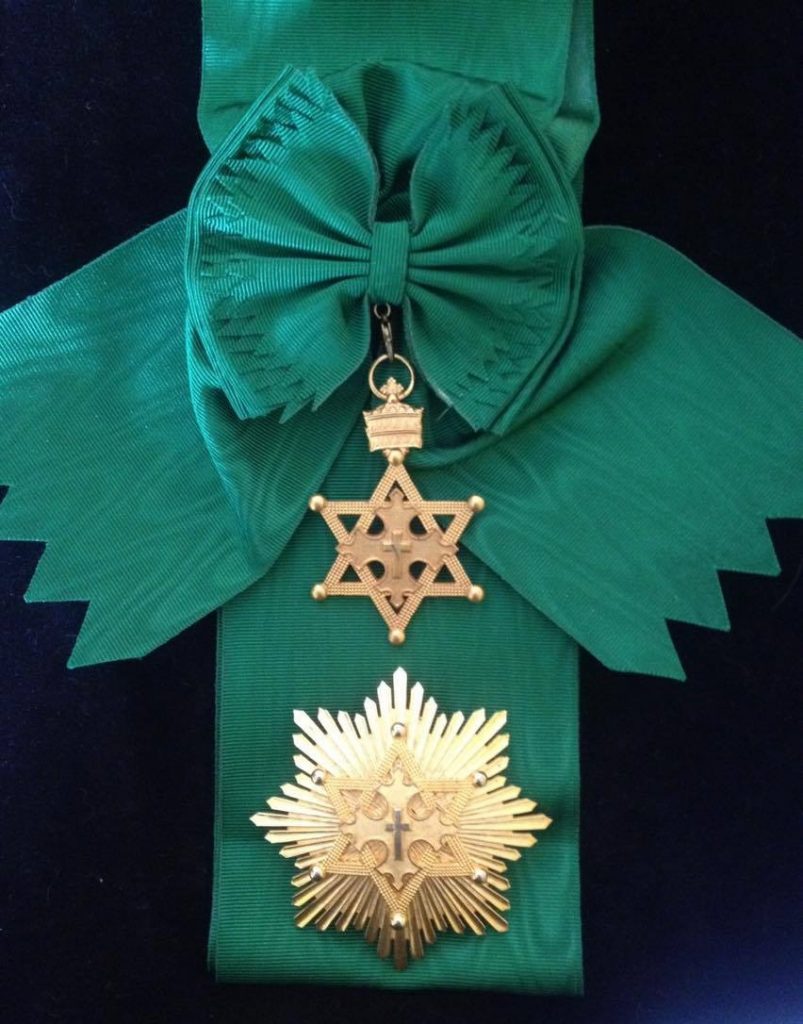
Grand Cross Order of Solomon’s Seal-Collar and Breast Badge. (Photo used with the kind permission
of Moa Anbessa Treasure House.)
In 1955, Bedros Sevadjian imported big presses for stamping of medals etc. from Birmingham and Loughborough, UK. His lathe was imported from Czechoslovakia and the other machinery from Italy, including one of the most important, the repeater/engraver which was used to make dies. Bedros Sevadjian’s products are outstanding because of the sharp reliefs and clarity of design achieved by the use of the pressure stamping process—14 tons—prior to hand-finishing. No one in Addis Ababa had the machinery or ability to replicate his work.
The authorities of the Derg dismantled these magnificent machines in order to carry them away from the factory, but were unable to do so due to their great weight. The machines are now left lying broken in a heap in a corner of the factory building.
Before the 1950’s, decorations, medals, and awards had been contracted to famous French and British manufacturers. By 1956, Bedros Sevadjian was making fine decorations with his presses. The more elaborate items were cut out and finished by hand.
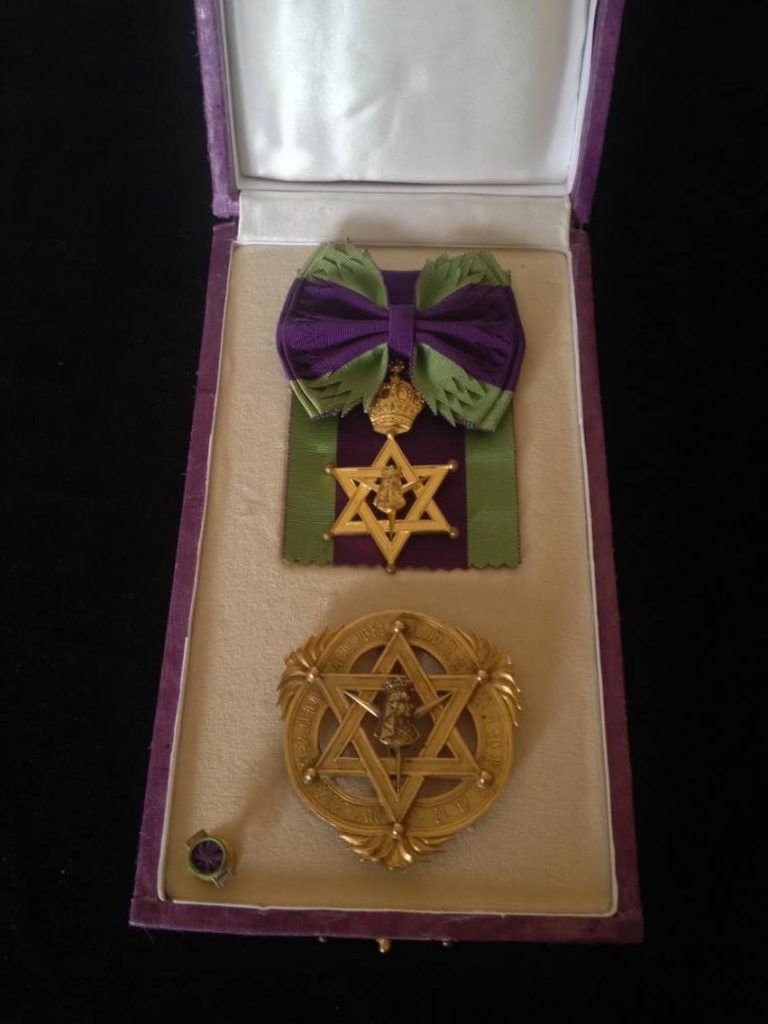
Ladies Order of Queen of Sheba-Collar and Breast Badge. (Photo used with the kind permission
of Moa Anbessa Treasure House)
The factory employed about 30 full-time staff, the numbers doubling during the times when con-tracts had to be fulfilled. Among the skilled workers were: Ato Assefa foreman, Ato Berhane mas-ter polisher, Ato Kebede master jewelry-saw operator, and Signor Mullas master engraver and jeweler. There was also a young apprentice called Demamu, who still lives nearby.
In 1960, Bedros Sevadjian started making distinctive gold and silver “Lalibela & Aksum” crosses to be worn as jewelry. These were sold in his showroom/shop on Haile Selassie I Avenue (now known as Piassa). Such items are still made and readily available in Addis Ababa—though none are of as fine quality as those produced by B. A. Sevadjian. The many cross designs were inspired by the actual crosses used at the many monasteries in Ethiopia and are of intricate pattern. For the shop and tourist market, many innovative small silver items were made, such as ashtrays, match box holders, coffee spoons etc., all with the distinctive Ethiopian motif of the Lion of Judah.
Bedros Sevadjian made many quality official items which were given by H. I. M. to visiting for-eign dignitaries or taken as presents to countries visited by H. I. M. Among the most important were the solid silver wreath presented to the U. S. A. at the Lincoln Memorial in Washington, and the solid gold tray presented to H. M. Queen Elizabeth II on her visit to Ethiopia in 1962.
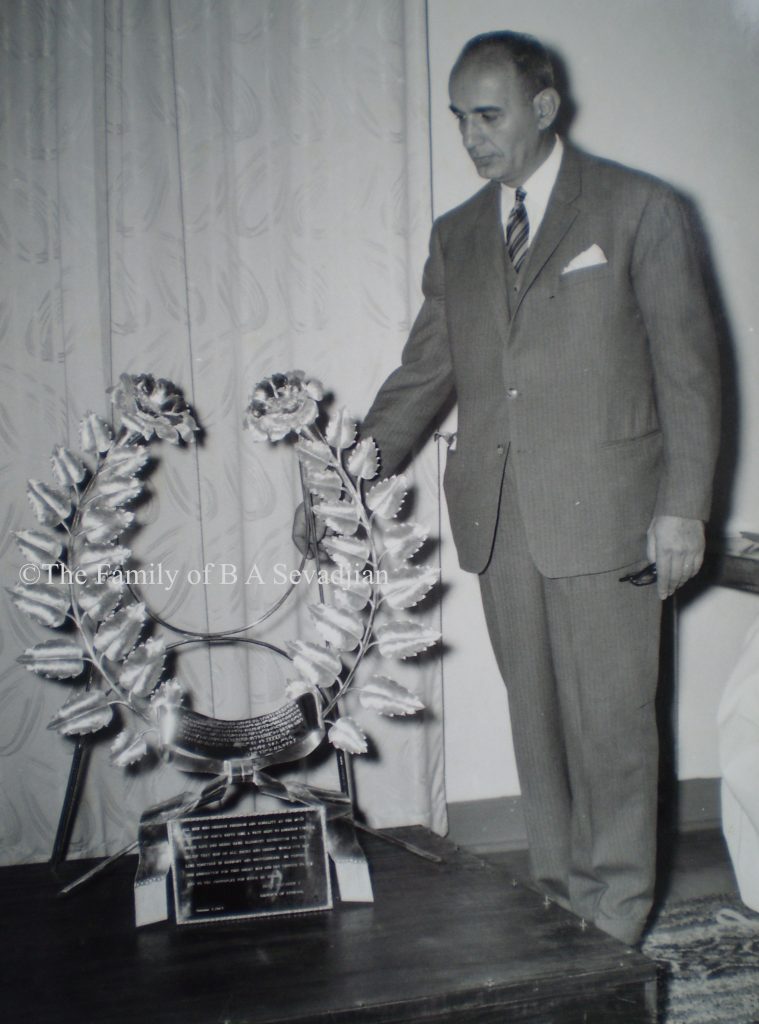
Silver Wreath laid at the Lincoln Memorial by HIM Haile Selassie I, Emperor
of Ethiopia. (Photo courtesy of the Family of B. A. Sevadjian)
Items made by Bedros Sevadjian bear the legend “B.A. Sevadjian Made in Ethiopia,” or if too small then “SB Ethiopia.” Early works are stamped “made in Ethiopie.”
Bedros Sevadjian lived and worked all his adult life in Ethiopia. In 1947, he married Dzovinar Va-nian (1928-2014) from Khartoum. They have four surviving children.
If you are interested in seeing more of Bedros Sevadjian’s work, please join the Facebook Group called “Bedros Sevadjian – his life and work.”
Source: Armenian Weekly
Link: Jeweler to an Emperor: Bedros A. Sevadjian (1918-1977)

